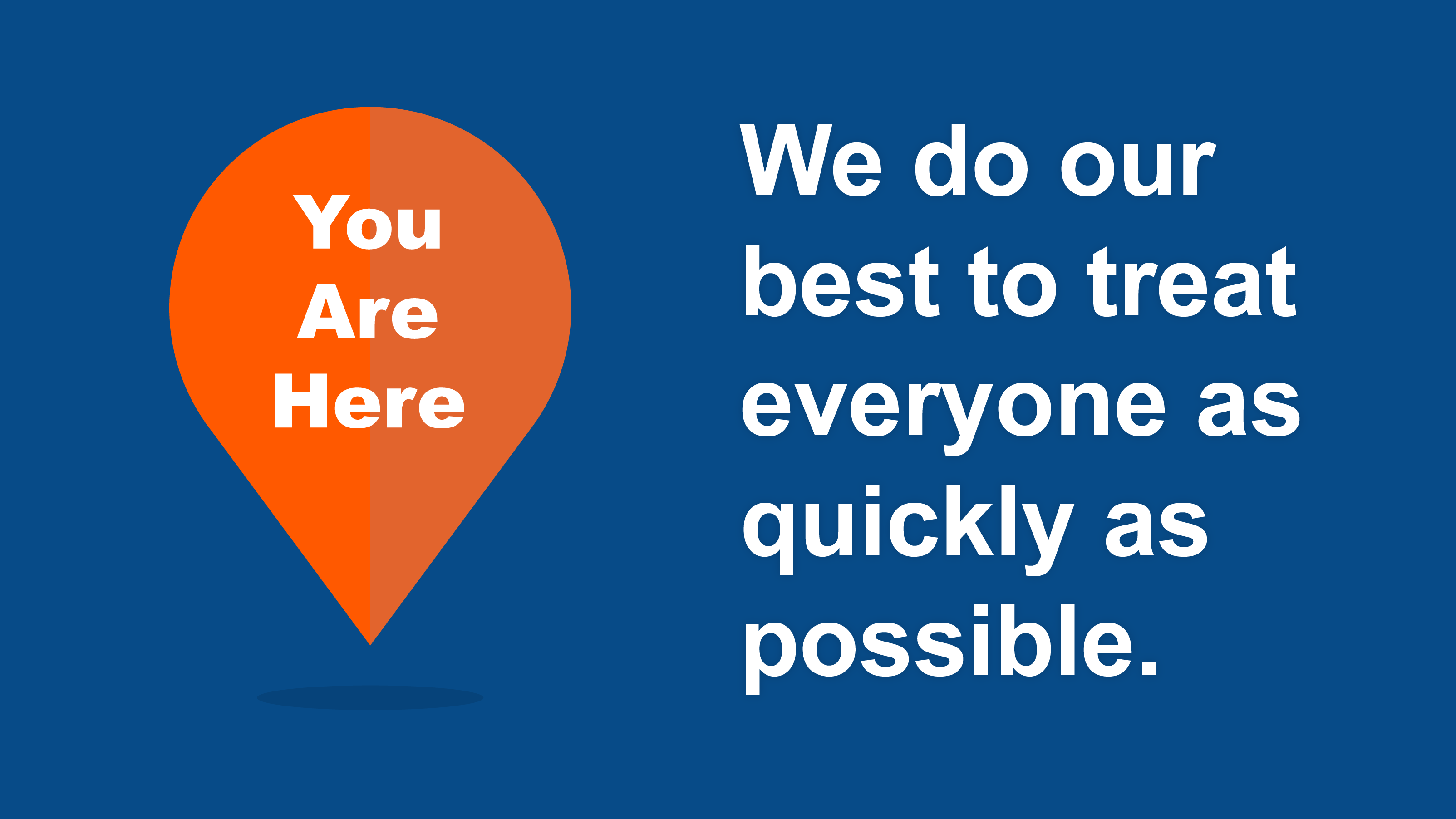View the brochure here. Translations available. Read this page in العربية (Arabic), 简体中文(Chinese Simplified), 繁體中文 (Chinese Traditional), ਪੰਜਾਬੀ (Punjabi) or 한국인 (Korean).
We understand this can be a stressful time and waiting can be frustrating. We will try to keep you updated as to what is happening. Let us know if there is something we can do to help you.
You can check wait times at fraserhealth.ca/ERwaits.
-
What to expect
We see the sickest people first, no matter when they come in or whether they come in on their own or by ambulance. Sometimes people arrive after you who must be treated before you. It might not be obvious to you why these people are seen first. We decide who to see first based on how severe or urgent the illness or injury.
Expect to be asked the same questions more than once. This is to make sure we have all the information we need to take care of you safely.
Expect to be cared for by multiple physicians.
Expect to be moved to different areas as we look into the reason for your visit and decide on the best care for you.
Find out if you can eat or drink before seeing an Emergency physician.
Watch this video about your Emergency Department visit: Behind the scenes with Dr. Murray
-
Arrive and check in
Here the registration clerk:
- Asks for your BC Services Card or CareCard.
- Confirms your contact information and the name of your family practitioner, if you have one.
- Registers you into our system.
- Gives you a hospital identification bracelet.
Please take your coat off before you see the triage nurse.
Here the triage nurse:- Asks about reason for your visit and quickly checks your illness or injury.
- Checks your blood pressure, pulse and oxygen levels.
- Determines how sick or injured you are, how quickly you need to be seen and what area of the Emergency Department is best for you at this time.
- Tells you where to go next and what to do.
- Might do any of the following:
- Give you pain medicine.
- Ask to have your blood, urine or heart rhythm checked.
- Send you for an x-ray.
You might have to wait in this area until we have some space for you in one of the other areas.
Anytime you start to feel worse, please let the nurse know -
Intake area
Here an emergency nurse:
- Might ask for more details about the reason for your visit, your health and the medicines you take.
- Might do any of the following:
- Review your illness or injury in more detail.
- Check your blood pressure, pulse and temperature.
- Give you pain medicine.
- Ask to have your blood, urine or heart rhythm checked.
- Send you for an x-ray.
If you do not feel comfortable talking about your condition in this area, please let us know.
-
Exam area
Here the emergency nurse or doctor:
- Reviews the reason for your visit.
- Examines you.
- Reviews any tests and treatments done so far.
- Might ask for tests to find out more about your illness or injury.
- Determines what could be the cause of your concern.
- Might start some treatments.
- Talks with you about the plan for care.
You might need to change into a hospital gown.
You might be in a chair, recliner or stretcher. -
Treatment area
We might move you to a chair, recliner or stretcher for monitoring and further treatment.
You might have to wait here while we process your test results and decide on the best treatment for you.
The emergency nurse continues to check on you.
The emergency doctor reviews your care, results from tests and how the treatment is working.
If you do not feel comfortable talking about your condition in this area, please let us know.
-
After the emergency
We talk with you about how best to manage your condition.
We explain how to care for yourself, and give you instructions if needed.
We can print a summary of your visit for you if you wish.
We let you know if you need a follow-up visit with a specialist, a health professional in the community or need to return to the hospital.
If needed, you might stay in the hospital or be moved to another hospital for certain tests, treatments or ongoing medical care.
Learn about your health care options, including when to use the Emergency Department, here.
-
Health information handouts
We might give you health information and instructions to take home.
This information is available to download or print in many languages.
Visit our Patient Education Catalogue to find, print or download the information you need to help understand and manage your care.
Anytime during your visit, we can arrange for a medical interpreter if you do not speak or understand English well enough to talk about your health.

